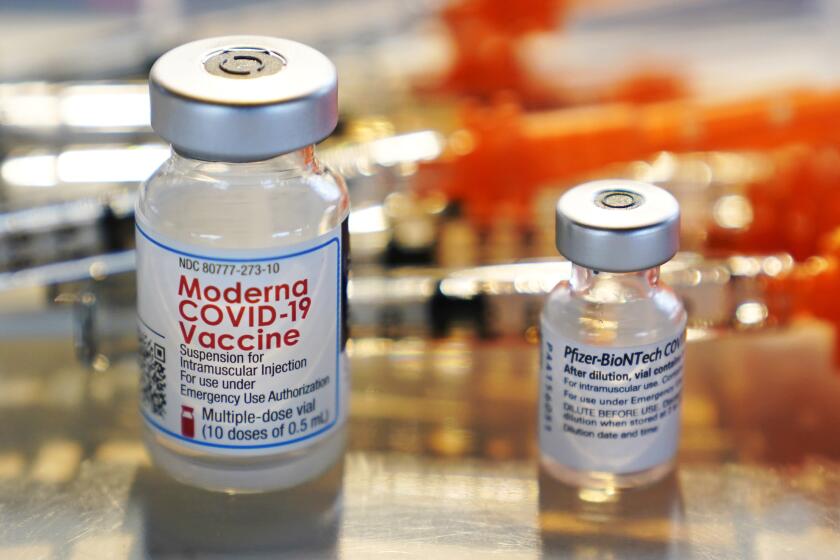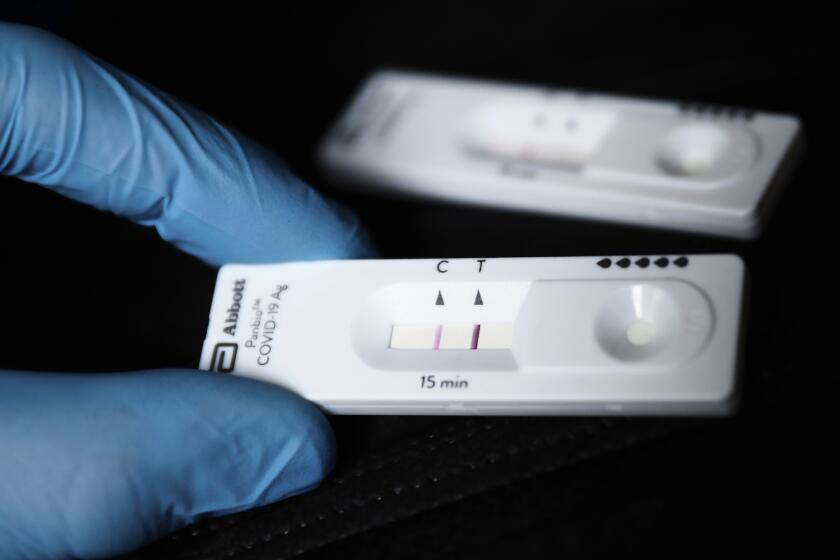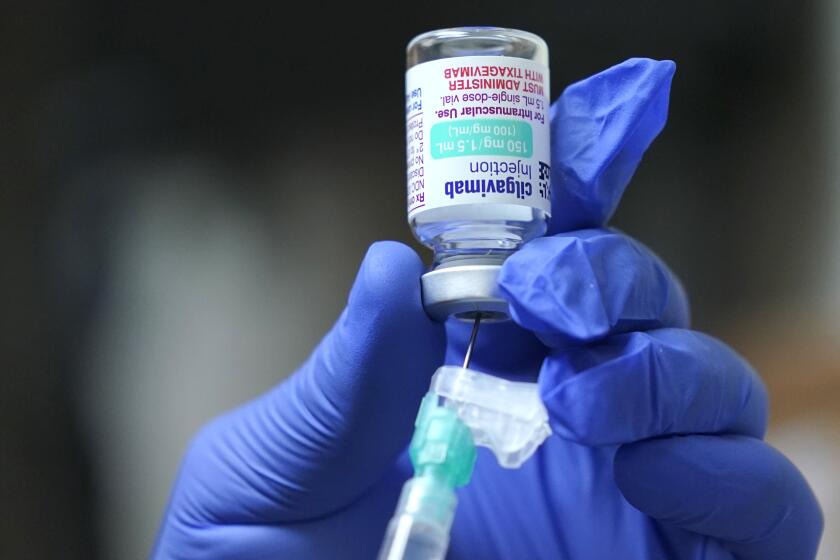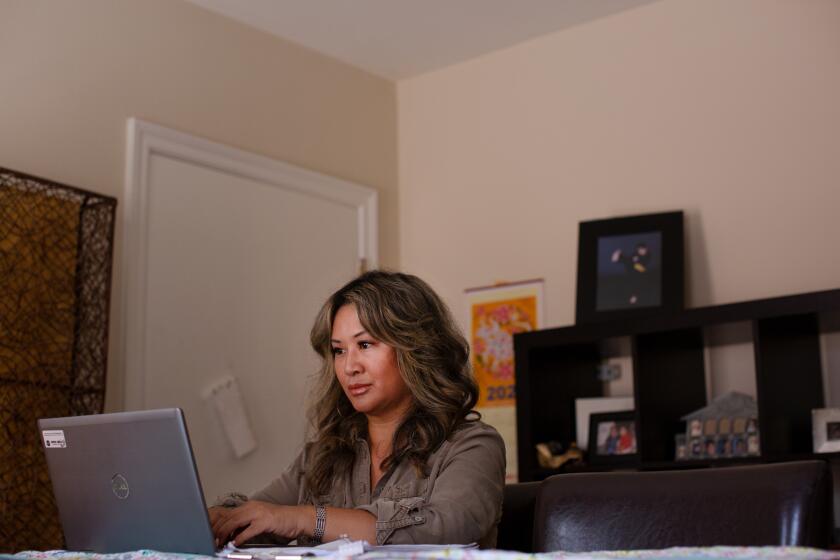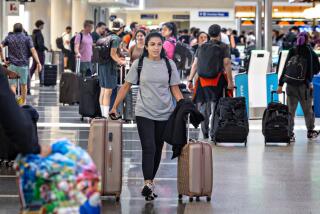Here’s the CDC’s new advice for protecting yourself against COVID-19
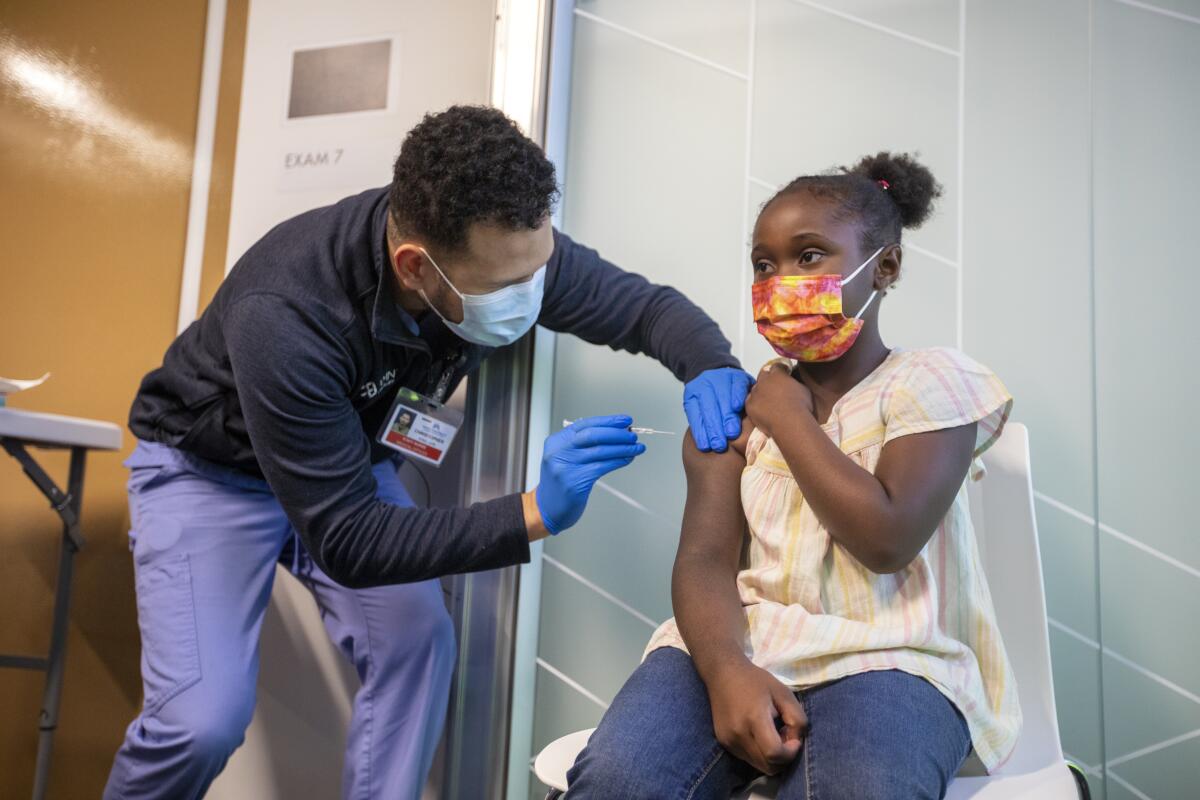
The federal Centers for Disease Control and Prevention wants to make it easier for Americans to steer clear of COVID-19.
The pandemic has been with us for 2½ years, but conditions are constantly changing — and that can complicate efforts to avoid its worst effects.
Whether you’ve been diligent about reducing your risk or you’ve gone back to your pre-pandemic ways, the new advice is intended to help you stay safe.
“Today, the CDC is streamlining its COVID-19 guidance to help people better understand their risk, how to protect themselves and others, what actions to take if exposed to COVID-19, and what actions to take if they are sick or test positive for the virus,” the agency said in a statement.
The new guidance was published Thursday in the CDC’s Morbidity and Mortality Weekly Report. It is intended to hasten the arrival of the day when COVID-19 “no longer severely disrupts our daily lives,” said Greta Massetti, a member of the CDC COVID-19 Emergency Response Team and lead author of the report.
Here’s a look at the CDC’s advice:
Get vaccinated
The first generation of COVID-19 vaccines may not stop you from getting a coronavirus infection, but they’ll significantly reduce your risk of becoming severely ill.
“The rates of COVID-19-associated hospitalization and death are substantially higher among unvaccinated adults than among those who are up to date with recommended COVID-19 vaccination,” the report says.
How much higher? In May, unvaccinated people ages 5 and up were six times more likely to die of COVID-19 than their counterparts who who were fully vaccinated, according to the CDC. The older you are, the more protection the vaccine provides.
Nationwide, 67.3% of Americans are fully vaccinated. But only 48.3% of those eligible for their first booster shot have received it. If you’re not one of them, the CDC urges you to change that and get up to date with your vaccinations.
With new COVID-19 boosters expected later this year, health experts urge Californians not to put off a first or second booster shot until then.
Here’s some motivation: In May, unvaccinated people ages 12 and up were nine times more likely to die of COVID-19 than their counterparts who were vaccinated and boosted.
Get tested if you have COVID-19 symptoms
The sooner you find out you have an infection, the sooner you can take steps to prevent further transmission.
There’s also a selfish reason to get tested if you suspect you might have COVID-19. The antiviral drug Paxlovid works best when started right away. If you’re eligible for the pills but wait more than five days to begin taking them, they won’t reduce your risk of becoming severely ill.
The new guidance also recommends that people get tested after they’ve been exposed to someone with COVID-19. But the CDC no longer advises tests to screen for infections in asymptomatic people in most cases. (Screening may still be valuable in high-risk settings like nursing homes and prisons, the agency says.)
Isolate when sick
If you do get COVID-19, you should isolate yourself from others for at least five days, since that’s the window when you’re most likely to spread the virus to others.
The day you experience your first symptoms or test positive (whichever comes first) is Day 0, and Day 1 is the full day that follows. You can stop isolating after Day 5 if you do not have a fever (without taking medication) and all other symptoms have improved. The CDC says you do not need to test negative to end your isolation (though the state of California disagrees).
Of the many things we still don’t understand about COVID, one of the most perplexing is knowing when it’s safe to stop isolating after a positive test.
If you stop isolating, you should wear a high-quality mask through the end of Day 10. However, you can ditch your mask sooner if you test negative on two consecutive coronavirus tests taken at least 48 hours apart, according to the new federal guidance. If you want to try this shortcut, the first test should not be taken any sooner than Day 6.
(Be forewarned: A small study published last week in the journal JAMA Network Open found that it took an average of eight days for people with asymptomatic infections to test negative even once, while among those who had any COVID-19 symptoms it took an average of nine days to test negative.)
Certain groups of people should isolate for a minimum of 10 full days, the CDC says. These include people who were moderately ill (had shortness of breath or other breathing difficulties) or were severely ill (required treatment in a hospital). If you were severely ill or you are immunocompromised, you should consult with your doctor before ending isolation.
Take Evusheld if eligible
People who are immunocompromised may not mount a strong immune response to COVID-19 vaccines. If your’e in this category, you can bolster your defenses with Evusheld.
The medication, administered in a series of two injections, provides recipients with monoclonal antibodies. These laboratory-made antibodies serve as stand-ins for the ones your body didn’t make on its own.
Evusheld can help protect immunocompromised people from COVID, but patients say scant awareness and a complicated process have hampered its rollout.
The drug is also recommended for people who can’t take COVID-19 vaccines because they’re at risk for a serious adverse reaction, such as anaphylaxis.
Forget about quarantines
Quarantine is often confused with isolation. But they’re different — a person in isolation knows they are infected, while a person in quarantine is at risk of becoming infected because they’ve been exposed to someone who is.
In the past, the CDC has endorsed quarantines as a way to prevent coronavirus transmission, especially for people who are not vaccinated.
No longer. At this point in the pandemic, so many people have coronavirus antibodies due to vaccination, past infection, or a combination of both that a blanket recommendation to quarantine doesn’t make sense, according to the new guidance.
However, if you’ve been exposed to an infected person, you should get tested at least five days later (or sooner, if you develop COVID-19 symptoms). You should also wear a mask when you’re around others for 10 days.
Cut back on contact tracing
Contact tracing is now recommended only for healthcare settings and certain other high-risk settings where people live in close quarters.
As the BA.5 subvariant has driven up coronavirus infections in L.A. County, contact tracers are only reaching a fraction of reported cases.
Everywhere else, the CDC advises public health workers to concentrate their efforts on making sure people who were exposed to the virus know how to get tested.
Keep tabs on your COVID-19 community level
The CDC updates levels for every county in the country on Thursdays. This metric accounts for the amount of coronavirus transmission in a county, as well as the impact COVID-19 is having on local hospitals.
The higher your COVID-19 community level, the more precautions you should take, the CDC says.
